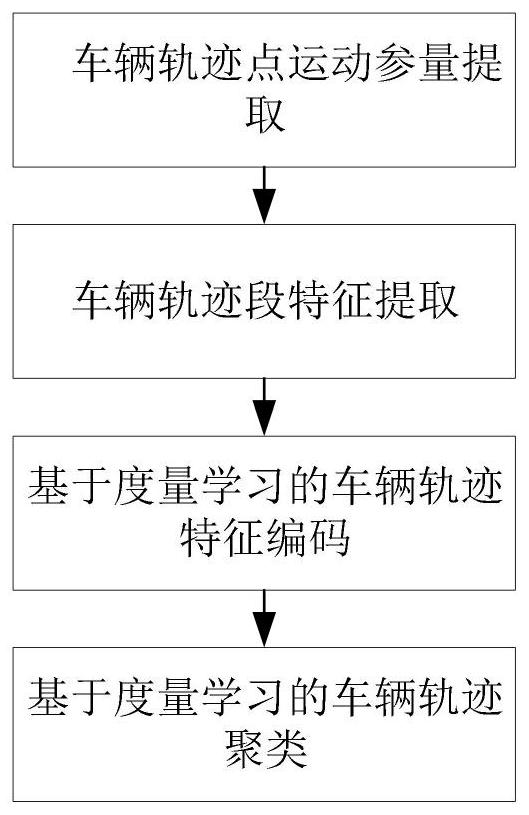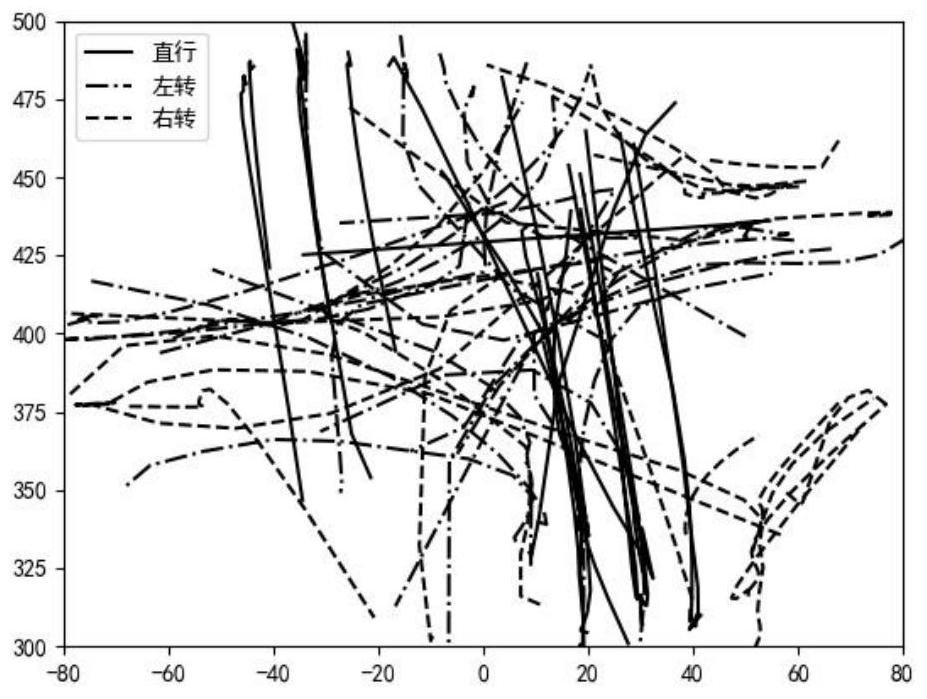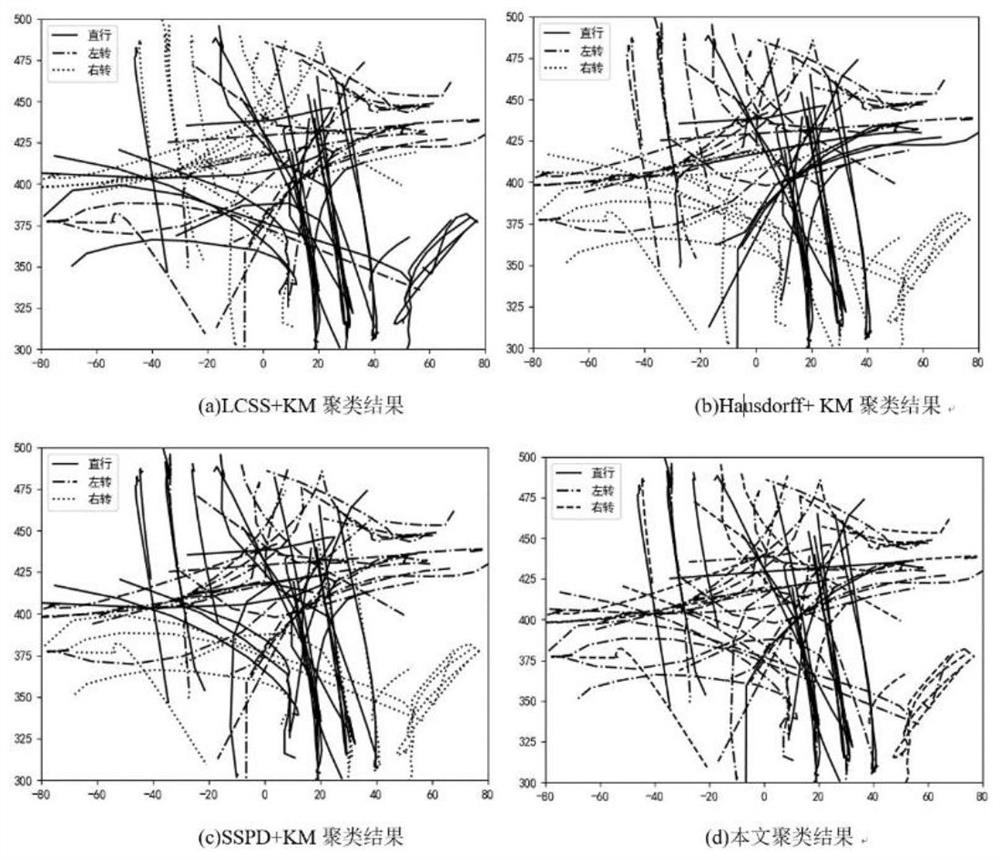Vehicle trajectory clustering method based on bag-of-word model and metric learning
A technology of vehicle trajectory and metric learning, which is applied in computing models, machine learning, character and pattern recognition, etc., can solve problems such as poor clustering effect, and achieve the effect of improving performance
- Summary
- Abstract
- Description
- Claims
- Application Information
AI Technical Summary
Problems solved by technology
Method used
Image
Examples
Embodiment 1
[0044] Aiming at the poor clustering effect of the traditional distance-based vehicle trajectory clustering method, the vehicle trajectory feature encoding and the similarity measure in the process of clustering the obtained feature descriptors affect the final clustering effect. Non-convex low-rank metric learning method for improving similarity measurement performance. Such as figure 1 As shown, the content of the present invention is to firstly extract the motion parameters of the vehicle trajectory points; secondly, based on the minimum description length principle, the vehicle trajectory is divided into a plurality of optimal homogeneous vehicle trajectory segments, and the statistical characteristics of each segment are obtained to obtain the trajectory segment feature set ; Then, use the bag-of-words model and the proposed metric learning method to encode each optimal homogeneous vehicle trajectory segment into a fixed-length vector to obtain its feature descriptor; fin...
PUM
 Login to View More
Login to View More Abstract
Description
Claims
Application Information
 Login to View More
Login to View More - R&D
- Intellectual Property
- Life Sciences
- Materials
- Tech Scout
- Unparalleled Data Quality
- Higher Quality Content
- 60% Fewer Hallucinations
Browse by: Latest US Patents, China's latest patents, Technical Efficacy Thesaurus, Application Domain, Technology Topic, Popular Technical Reports.
© 2025 PatSnap. All rights reserved.Legal|Privacy policy|Modern Slavery Act Transparency Statement|Sitemap|About US| Contact US: help@patsnap.com



